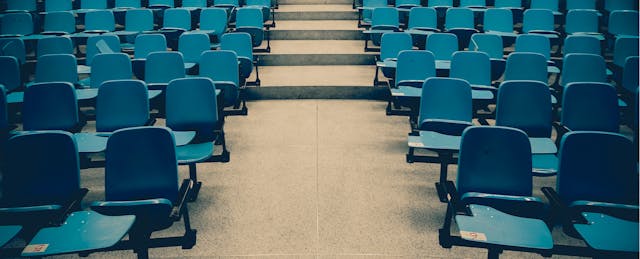Many K-12 schools this week have cancelled in-person classes and announced a shift to online teaching. But at least one online-learning expert thinks that's a bad decision, especially for vulnerable students.
That case was made on Twitter this week by Justin Reich, an assistant professor at MIT and the director of the Teaching Systems Lab there. He made his argument in a 20-tweet thread. See a slightly revised version here, published with his permission.
Many schools are trying to figure out if they should transition to online or distance learning during a shut down. I agree with the Washington State department of education, which argued that most schools won't be able to switch to online; they should just close and pick up in the summer or September.
A growing body of evidence suggests that online learning works least well for our most vulnerable learners. If you are going online, the number one question is not: “What tech to use to teach online?” It should be: “How will you support your most struggling students?”
You may have heard of the “no significant difference” phenomenon. That's an argument developed in the 1980s that the medium of instruction (whether courses are taught face to face, by radio or TV or via computer) doesn't matter; only the quality of the instruction does.
But that research was mostly from small-scale, “hothouse” experiments. And the best experimental research then was often in medical schools.
Plus, the “no significant differences” argument pre-dates widespread online learning.
To be clear, this “no significant difference,” or NSD, argument was that a student would learn as much from a computer or a filmstrip as from class, as long as the instruction is the same. NSD was a kind of shorthand for “good enough, and probably cheaper.”
But over the last 10 years we’ve deployed online learning at a massive scale in K-12 schools, colleges, through large-scale MOOCs, etc. And the emerging picture is much different than those NSD findings.
Many students do worse online than in face-to-face classes, and the most vulnerable students are the most negatively affected.
For instance, a Washington State community college study found that most students on average do worse in online courses compared to face-to-face ones, but younger students, Black and Latino students, and students with low prior GPA do even worse.
And at Ohio’s virtual charter schools, students in all subjects do worse on average than those at traditional and charter schools that teach face-to-face. And that is especially true for students with low prior achievement.
In MOOCs, we found that students whose parents didn’t earn a BA were more likely to drop out than students whose parents have a BA. And that effect was most pronounced for the youngest students.
As Susan Dynarski argued in the New York Times, there is good evidence that online course harm the students who need the most help.
And that recent research comes from reasonably well-planned online learning courses for students who choose to sign up for them. I have every expectation that if schools at attempt rapid, unplanned transitions, things will be much worse for vulnerable students.
Some elite schools are going online quickly and getting media attention, but most schools should not use them as a reference. The Harvard and Princeton admissions departments are designed to only admit kids who can teach themselves anything. Your college probably has to teach everybody.
These are hard choices, and I won’t second guess the folks in the trenches who have to make these hard decisions. But if your school does go online, the first question should not be “what tech should I use?” The first question needs to be "How do we support our most vulnerable students?”
How will you support students who depend upon schools for food and safe shelter? How will you support students with special needs? How will you support students without reliable access to devices and the internet?
If you do go online, figure out how you will make ongoing, human connections with your most vulnerable students. The best online teachers I’ve met tell me that most of their time is spent tracking down students who need help, especially those who don’t ask for it.
There is another thread to be made about the fact that for many students, school is the place young people go to get healthy meals, find safe spaces to spend the day, to get laundry done, et cetera. Your local and regional safety net depends tremendously on public schools.
Most schools should pick up days in June or Sept rather than try to go online. If you are a teacher and you have to go online, think about how you will allocate time to make daily or regular human connections with your most vulnerable students.
There are lots of lists popping up of “best practices in online instruction.” I haven’t yet found one that starts with “Consider how you will identify struggling learners and personally connect with them.”
That should be the first thing on the list.
Here is the start of the original Twitter thread:
Many schools are trying to figure out if they should transition to online/distance learning during a shut down. I agree with the Washington State dept of education: most schools won't be able to switch to online; they should just close and pick up in June/Sept. Here's why... 1/x pic.twitter.com/ifyL3UrGvs
— Justin Reich (@bjfr) March 10, 2020


